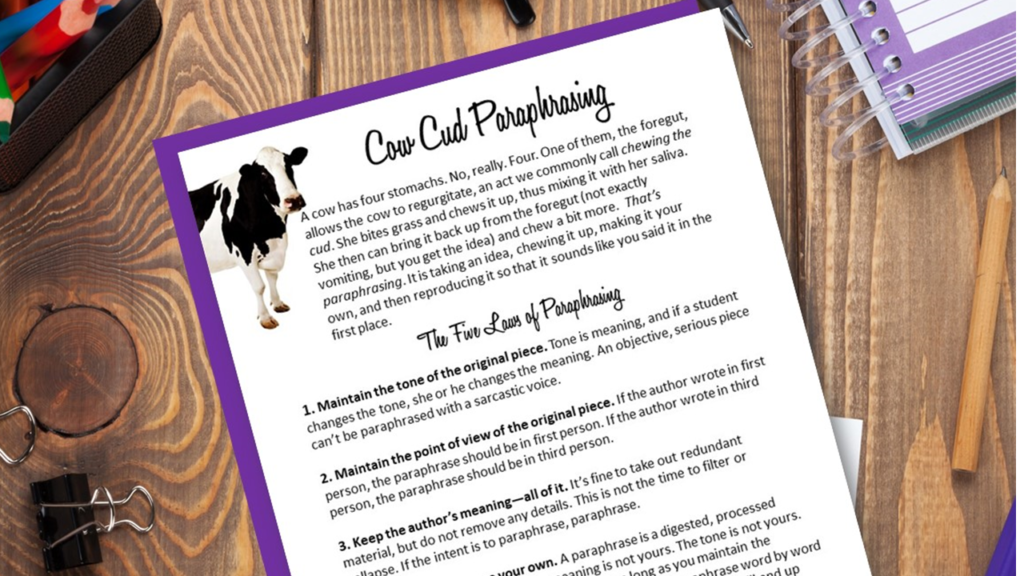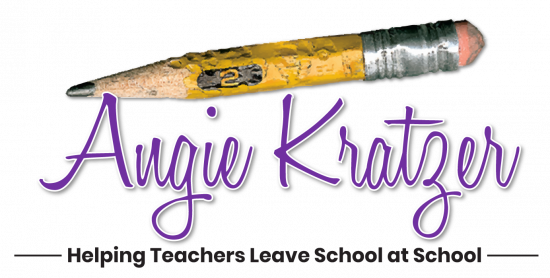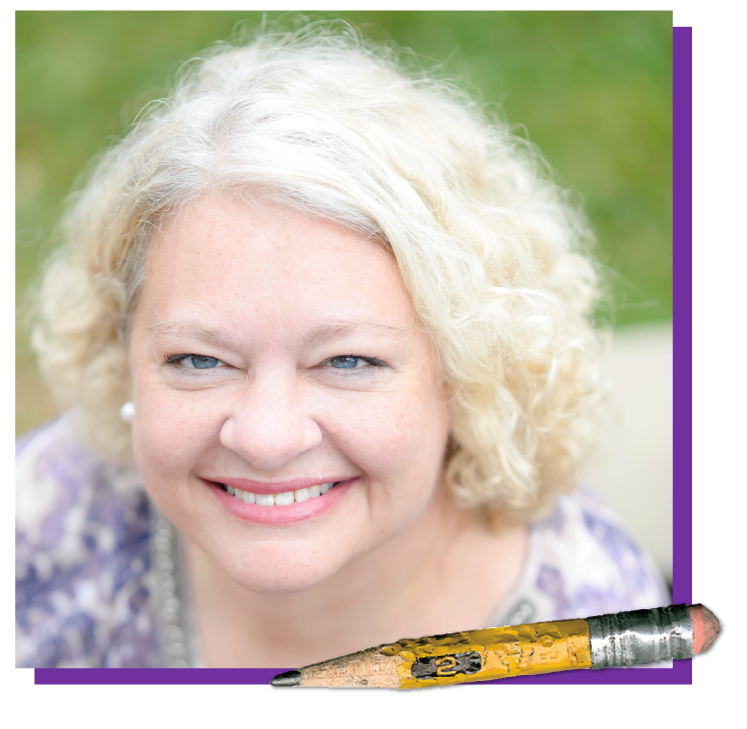After decades of throwing around the word rigor, we still can’t seem to come to agreement about what it is.
I see in private school marketing materials institutions that offer “a rigorous course of study.” The average parent interprets that to mean that this school will be a challenge in some way . . . or multiple ways.
A teacher might see that description and beef up the homework load. An administrator braces herself for complaints from the community about the kind of kids the school is turning out.
All of them have it wrong.
I have come to believe that rigorous is not a word we can use to describe a curriculum, a school, a course, or a teacher.
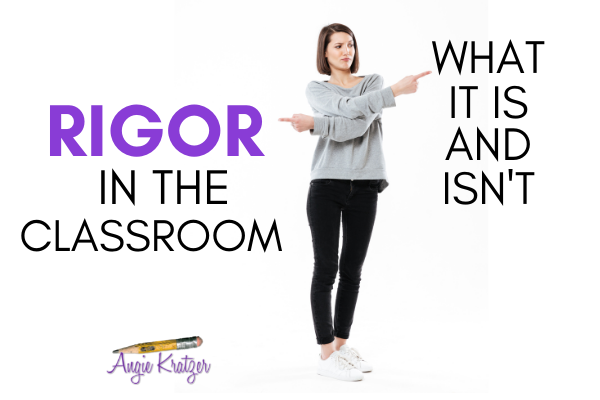
I have come to believe that rigorous is not a word we can use to describe a curriculum, a school, a course, or a teacher.
What Rigor is NOT
Rigor is not offering more intellectual opportunities in honors-level classes than in remedial, standard, or “on-level” classes. That’s not to say we don’t offer more extension activities since class time is not devoted to remediation; that’s just not what rigor is.
Rigor is not giving more classwork or homework.
Rigor is not giving students work that is out of their zone of proximal development. (The ZONE is that sweet spot of not-too-easy and not-too-hard, specifically in reading.)
Rigor is not about it being really, really hard to earn an A.
Rigor is not about challenging cocky students who have never made anything below an A.
Rigor is not about content or skill sets being new or really difficult to master.
Rigor is not about the speed with which we move students through curricula.
Rigor is not Harvard, UC Berkeley, MIT, Brown, or Penn.
Rigor is not that charter school to which everyone in your community is fleeing.
Rigor is not content; it’s what you do with it.
What Rigor Is
This section will be short.
Rigor simply is working and thinking at the upper levels of Bloom’s Taxonomy.
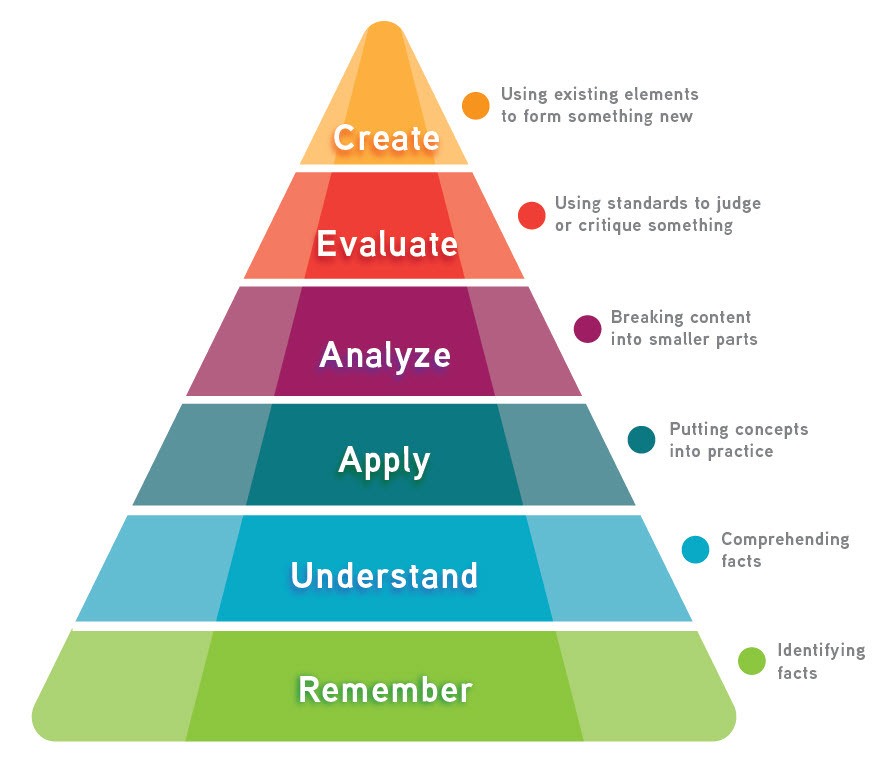
Throwing Out the Baby with the Bathwater
In a former life, I was a curriculum coach; I went into classrooms at our district’s 48 middle and high schools and helped teachers plan lessons, deliver content, build skills, and analyze data. At one of the schools, the principal banned the use of the word “What” in essential questions. I thought it was ridiculous because we do at times have to devote class time to simple, remember-level content. “What” can also be part of evaluation and creation.
For example, when I teach students about fake news, I have to help them understand what the term means to different people groups (like conservatives versus progressives). That lesson or mini lesson might be governed by the question “What is fake news?” Slightly better might be “How do people of different political views define fake news?”
Each level of the revised Bloom’s Taxonomy asks students to do different things with knowledge, so the questions we ask at each level will be different.
I really like this question stem and task list generated by Melissa Kelly for ThoughtCo.com
What does rigor look like practically?
Back to the fake news example:
My students will be at the remember level when they learn different definitions of fake news.
They will be at the understand level when students can look at the Media Bias Chart and read the grid.
Students will be applying their knowledge when they can explain to me why Reuters can be trusted and Newsmax cannot.
Now we get those brain synapses firing.
They will be at the analyze level (which is often where we stop, even with stronger students) when they can read an article and break down the parts that a disreputable organization might manipulate.
By the time we move up to the evaluate level, I want to be asking them questions like this: What information will we use to evaluate whether or not a source is reliable? (See? There’s a what stem that is all the way up at evaluation!)
By the time we get to the create level, my questions will look something like this: How will we create and disseminate a fake news story in order to track its spread and impact?
Take a look at these assignments given at the create level (Thanks again to Melissa Kelly’s ThoughtCo.com article):
Create
Create a haiku about a desert animal.
Invent
Invent a new board game about Industrial Revolution inventors.
Compose
Compose a new piece of music that includes chords in the key of C major.
Propose
Propose an alternative way to get students to clean up after themselves in the lunchroom.
Plan
Plan an alternative meal to serve vegetarians during Thanksgiving.
Design
Design a campaign to help stop teenage smoking.
Formulate
Formulate a bill that you would like to see passed in Congress.
Develop
Develop an idea for a science fair project that focuses on the effects of pollution on plant life.
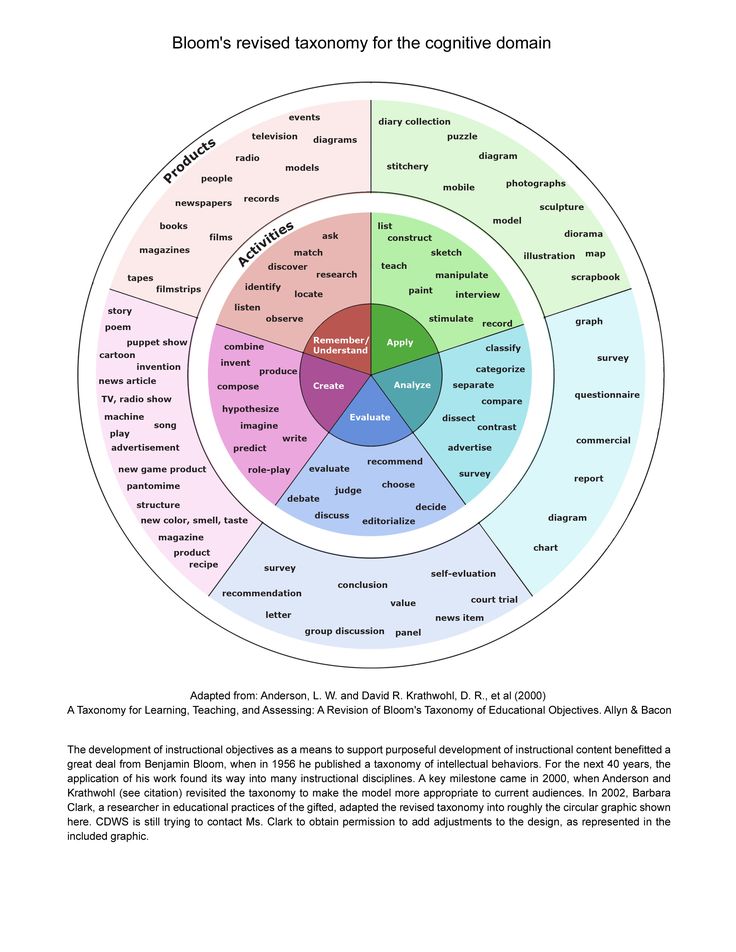
How do we plan for rigor?
Not every lesson will move all the way up through Bloom’s, but it’s safe to say that no pivotal content or skill can be left behind without treatment at each level. Just like Mazlow’s Hierarchy of Needs (I cannot learn from you if I’m hungry), Bloom’s is stacked as well; in order to evaluate and create, I must acquire the language and tools to do so.
Every curriculum has anchor standards, content and skills that students need both to get material down the line within that curriculum but also to leverage material in other content areas. For example, inference will forever be an anchor skill at all levels of ELA because it is VITAL in every way. Inference must move up Bloom’s in order for students to get to mastery.
I’m a high school English teacher; trust me when I tell you that I can tell you which students were never exposed to the upper levels of Bloom’s with inference.
One type of inference is context clues, so I need to help students recognize the nine types of context clues. BUT I CAN’T LIVE THERE. Within my context clues lessons, I have to deliver a lower-level lesson to give them the terminology to apply and analyze. But then we have to go all the way up to creating passages that use those nine types of clues. Then the skill begins to stick.
So don’t throw the baby out with the bathwater. Just don’t forget to wash all the parts.
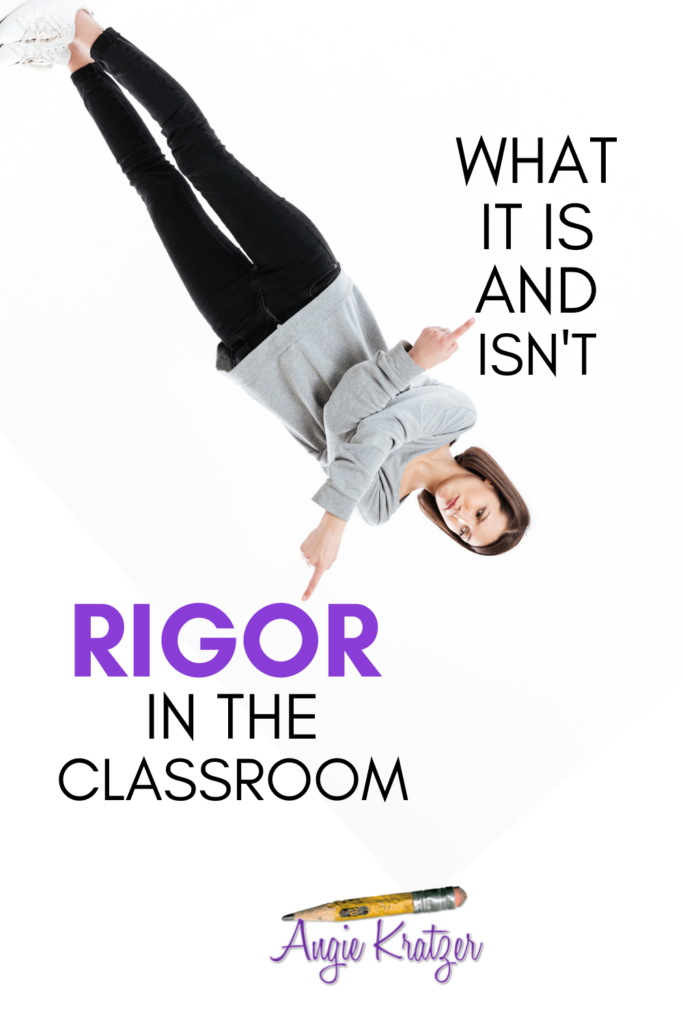
Who gets the rigor?
This section will be really short too.
EVERYONE.
The Advanced Placement students, the tenth graders who read on a second-grade level, the students with learning differences, the jocks, the nerds, the Kardashians–every kid in every course must experience rigor.
Every child we teach must be taken up to analyze, evaluate, and create.
The most rigorous instruction that happens in an English classroom is devoted to the elusive skill of paraphrasing. If you’d like an anchor chart to help with that process, you can get it here.
